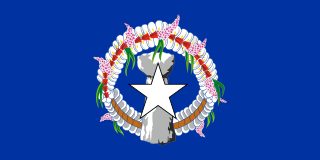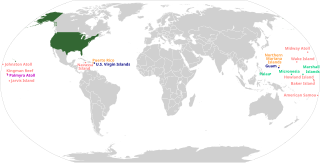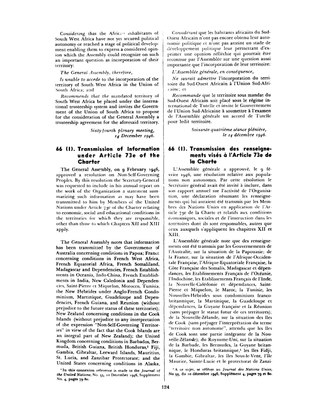 |
|---|
A referendum on the status of the Northern Mariana Islands was held on 5 February 1961. [1] Although 65% of voters supported integration with Guam, the United States did not integrate the islands. [1]
 |
|---|
A referendum on the status of the Northern Mariana Islands was held on 5 February 1961. [1] Although 65% of voters supported integration with Guam, the United States did not integrate the islands. [1]
Saipan had been administratively separated from Guam since 1898, when the latter had come under American control. [1] Saipan also came under American control in 1947. [1] In 1957, the Popular Party had victories in Guam and Northern Marianas. In 1958, an unofficial poll in Saipan had been in favor of integration and the Guam Legislature had asked the US Congress to integrate the Northern Marianas's government into Guam's. [2]
The 1961 referendum was organized by the local Parliament, as members wished to integrate with Guam. [1] It was held prior to a March visit by a United Nations commission checking on the conditions of the UN trust territories. [1] Rota was in a different district at the time, and could not vote. [2]
Voters were given four options: [1]
| Choice | Votes | % |
|---|---|---|
| Integration with Guam | 1,642 | 64.54 |
| US territory | 875 | 34.40 |
| Status quo | 27 | 1.06 |
| Other status | 0 | 0.00 |
| Invalid/blank votes | 8 | – |
| Total | 2,552 | 100 |
| Registered voters/turnout | 3,035 | 84.09 |
| Source: Direct Democracy | ||
The Carolinian community held a poll opposed to integration. Both results were given to the UN mission upon its arrival, but neither affected the mission's stance that the area needed greater self-reliance. [2] Later referendums were held in 1963 and 1969.

The Northern Mariana Islands, officially the Commonwealth of the Northern Mariana Islands, is an unincorporated territory and commonwealth of the United States consisting of 14 islands in the northwestern Pacific Ocean. The CNMI includes the 14 northernmost islands in the Mariana Archipelago; the southernmost island, Guam, is a separate U.S. territory. The Northern Mariana Islands were listed by the United Nations as a non-self governing territory until 1990.

Saipan is the largest island and capital of the Northern Mariana Islands, a commonwealth of the United States in the western Pacific Ocean. According to 2020 estimates by the United States Census Bureau, the population of Saipan was 43,385, a decline of 10% from its 2010 count of 48,220.

The Mariana Islands, also simply the Marianas, are a crescent-shaped archipelago comprising the summits of fourteen longitudinally oriented, mostly dormant volcanic mountains in the northwestern Pacific Ocean, between the 12th and 21st parallels north and along the 145th meridian east. They lie south-southeast of Japan, west-southwest of Hawaii, north of New Guinea and east of the Philippines, demarcating the Philippine Sea's eastern limit. They are found in the northern part of the western Oceanic sub-region of Micronesia, and are politically divided into two jurisdictions of the United States: the Commonwealth of the Northern Mariana Islands and, at the southern end of the chain, the territory of Guam. The islands were named after the influential Spanish queen Mariana of Austria following their colonization in the 17th century.

The 51st state is a term in American political discourse that refers to areas considered to be candidates for U.S. statehood, joining the 50 United States existing since 1959. The phrase has been applied to external territories, as well as the country's capital for the District of Columbia and parts of already-existing states which would be admitted as separate states in their own right.

Territories of the United States are sub-national administrative divisions overseen by the federal government of the United States. The various American territories differ from the U.S. states and Indian reservations as they are not sovereign entities. In contrast, each state has a sovereignty separate from that of the federal government and each federally recognized Native American tribe possesses limited tribal sovereignty as a "dependent sovereign nation." Territories are classified by incorporation and whether they have an "organized" government through an organic act passed by the Congress. American territories are under American sovereignty and, consequently, may be treated as part of the United States proper in some ways and not others. Unincorporated territories in particular are not considered to be integral parts of the United States, and the Constitution of the United States applies only partially in those territories.
Commonwealth is a term used by two unincorporated territories of the United States in their full official names, which are the Northern Mariana Islands, whose full name is Commonwealth of the Northern Mariana Islands, and Puerto Rico, which is named Commonwealth of Puerto Rico in English and Estado Libre Asociado de Puerto Rico in Spanish, translating to "Free Associated State of Puerto Rico." The term was also used by the Philippines during most of its period under U.S. sovereignty, when it was officially called the Commonwealth of the Philippines.
In the United States, each state has its own written constitution.

Pagan is a volcanic island in the Marianas archipelago in the northwest Pacific Ocean, under the jurisdiction of the Commonwealth of the Northern Mariana Islands. It lies midway between Alamagan to the south, and Agrihan to the north. The island has been largely uninhabited ever since most of the residents were evacuated due to volcanic eruptions in 1981.

Chapter XI of the United Nations Charter defines a non-self-governing territory (NSGT) as a territory "whose people have not yet attained a full measure of self-government". In practice, an NSGT is a territory deemed by the United Nations General Assembly (UNGA) to be "non-self-governing". Chapter XI of the UN Charter also includes a "Declaration on Non-Self-Governing Territories" that the interests of the occupants of dependent territories are paramount and requires member states of the United Nations in control of such territories to submit annual information reports concerning the development of those territories. Since 1946, the UNGA has maintained a list of non-self governing territories under member states' control. Since its inception, dozens of territories have been removed from the list, typically when they attained independence or internal self-government, while other territories have been added as new administering countries joined the United Nations or the General Assembly reassessed the status of certain territories.

The Northern Mariana Islands Commonwealth Legislature is the territorial legislature of the U.S. commonwealth of the Northern Mariana Islands. The legislative branch of the territory is bicameral, consisting of a 20-member lower House of Representatives, and an upper house Senate with nine senators. Representatives serve two-year terms and senators serve four-year terms, both without term limits. The territorial legislature meets in the commonwealth capital of Saipan.

The Northern Mariana Islands' first election of a delegate to the United States House of Representatives took place on November 4, 2008. Since the CNMI traditionally had general elections in odd-numbered years, the November 2008 ballot contained only this office.

Lesbian, gay, bisexual, and transgender (LGBT) rights in the Northern Mariana Islands have evolved substantially in recent years. Same-sex marriage and adoption became legal with the Supreme Court's ruling in the case of Obergefell v. Hodges in June 2015. However, the U.S. territory does not ban discrimination based on sexual orientation and gender identity, except in relation to government employees. Gender changes are legal in the Northern Mariana Islands, provided the applicant has undergone sex reassignment surgery.
A referendum on union with the Northern Mariana Islands was held in Guam on 4 November 1969. The proposal was rejected by 58% of voters due to fears about an increase in taxation. Despite the result, a similar referendum was held in the Northern Mariana Islands on 9 November in which 61% of voters supported union with Guam.

An unofficial referendum on integration of Northern Marianas with Guam was held in Saipan in June 1958. Though the proposal was approved by nearly 64% of voters and the Guam Legislature adopted Resolution No. 367 requesting the US Congress to integrate the governments, the United States did not integrate the islands.

An unofficial referendum on integration with Guam was held in the Northern Mariana Islands on 27 October 1963. Although the proposal was approved by voters, the islands were not integrated.

A referendum on the status of the Northern Mariana Islands was held on 9 November 1969. For the fourth time since 1958 a majority of voters supported integration with Guam. However, a referendum held in Guam on 4 November on integration with the Northern Mariana Islands had been rejected by 58% of Guamanian voters.

A referendum on becoming a US commonwealth was held in the Northern Mariana Islands on 17 June 1975. The proposal was approved by 79% of voters. As a result, the United States Congress approved the change of status on 24 March 1976.

Star Marianas Air, Inc. is a U.S. commuter airline headquartered at Tinian International Airport in Tinian Municipality, Northern Mariana Islands. It operates scheduled and charter passenger service in the Commonwealth of the Northern Mariana Islands and Guam, both U.S. territories in the Pacific Ocean.
The CNMI Cannabis Act of 2018 is a bill introduced in the Northern Mariana Islands Commonwealth Legislature in 2017 as SB 20-62. It was introduced by Senator Sixto Igisomar and would legalize cannabis possession and consumption by adults and create a Cannabis Commission to regulate sales in the Commonwealth. Hearings on the act were held in October, 2017; a senator said it had the highest public attendance of any hearings he knew of. On May 16, 2018, SB 20-62 had a final vote in the Commonwealth's Senate, and was passed without opposition. On May 30, it passed the House Committee on Judiciary and Governmental Operations unanimously.
The Marianas archipelago of the Northern Pacific contains fourteen islands located between Japan and New Guinea on a north–south axis and Hawaii and the Philippines on an east–west axis. Inhabitants were Spanish nationals from the 16th century until the Spanish–American War of 1898. As Guam became a territory of the United States the Northern Marianas were sold to Germany in 1899. The Northern Mariana Islands were a German protectorate until 1919, when they became part of the South Seas Mandate, administrated by Japan. At the close of World War II, the Marianas became part of the Trust Territory of the Pacific Islands. In 1975, the Commonwealth of the Northern Mariana Islands became a self-governing territory. In 1986, the Marianas came under the sovereignty of the United States when the trusteeship ended and US nationality and citizenship was conferred on the inhabitants of the territory.